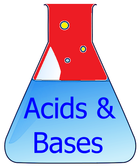
Understanding the basis of pH can be complicated and sometimes difficult to explain. But I have tried to make it as readable as possible and have not gone deeply into the math and real complexities of understanding the art and science of acids and bases. So, this will be a primer and if you are new to the subject, I hope that it will be helpful and informative.
So, let’s get started with three important definitions:
Ion- An atom or molecule in which the total number of electrons is not equal to the number of protons giving it a net positive or negative electrical charge.
Anion- An ion that has more electrons than protons giving it a net negative charge. (Remember that electrons are negatively charged and protons are positively charged).
Cation- An ion that has fewer electrons than protons giving it a net positive charge.
Almost every liquid that we see has either an acidic or basic characteristic with the exception of pure or very well distilled water. In this case the ions are balanced and have no measurable charge. But most other water from the tap or well, will have an ionic charge. This can be relatively small or quite noticeable. So, to measure how acidic or basic a liquid may be, we use a scale that goes from 0 to 14. Since distilled water is electrically neutral, it has a pH of 7. The way we think of the relative charge of a liquid is to look at how the ions have influenced the liquid. The pH scale is focused on the concentration of hydrogen ions (H+), and hydroxide ions (OH-). The pH scale for acids is from 0 to 7, (relative number of H+ ions) with 0 being a strong acid and 7 being neutral. And, in this example, a pH of 6.9 would be a very weak acid. The pH scale for bases is from 7 to 14, (relative number of OH- ions), with 14 being a strong base and 7 neutral. In this instance a pH of 7.1 would be a very weak base.
And here is a quick side thought: Since we are talking about ions which are extremely small, the pH scale is logarithmic, meaning that each number on the scale from 0 to 14 is a ten-fold difference between numbers. Why? A strong acid can have one hundred million, million, (100,000,000, 000,000), times more hydrogen ions than a strongly basic solution so the numbers are just too large to use effectively, so 0 to 14 works more easily. So, let’s see if we can put this information into the proverbial nutshell:
Acid- A solution that has an excess of (H+) ions.
Base- A solution that has an excess of (OH-) ions.
Strong acid- An acid that has a very low pH (0-4).
Strong base- A base that has a very high pH (10-14).
Weak acid- An acid that only partially ionizes in water and has a pH closer to neutral (5-7).
Weak base- A base that only partially ionizes in water and has a pH closer to neutral (7-9).
And what happens when an acid is mixed with a base, for example, Hydrochloric acid (HCl) and Sodium Hydroxide (NaOH)? The ions react to neutralization with water and a salt as the products:
HCl + NaOH ---> NaCl + H2O
There is a great deal of information on acids, bases, and pH on the web to check out if you are interested in going deeper into the subject. If you are looking for a list of everyday items and their pH, check here.
Stay tuned for the next post…
 RSS Feed
RSS Feed
